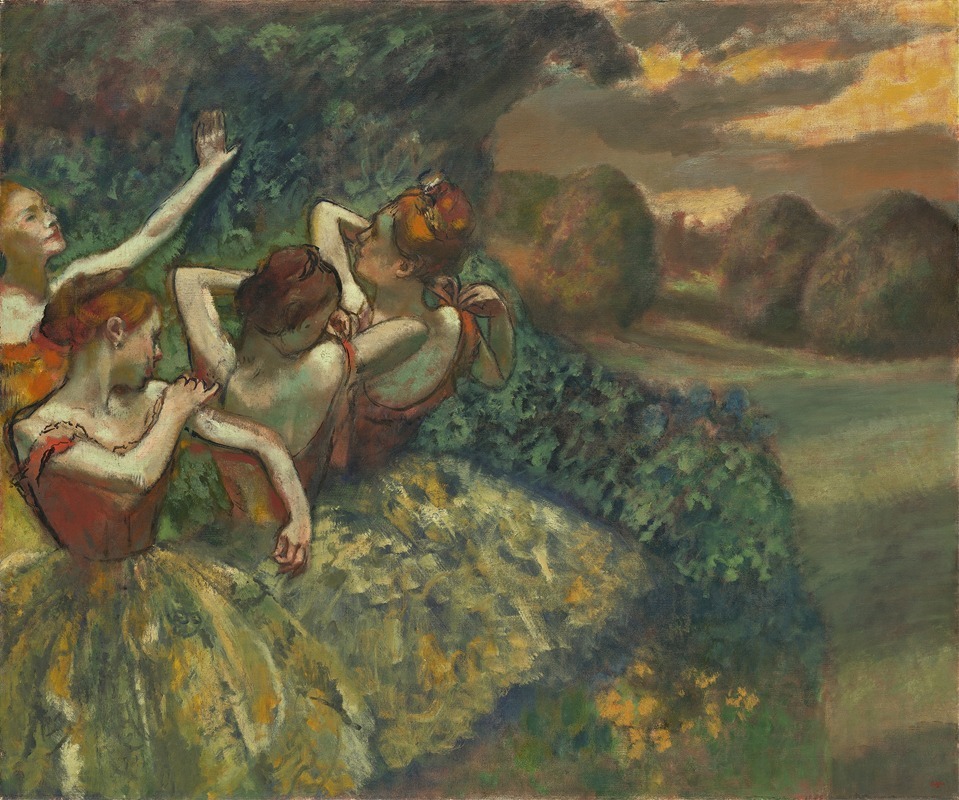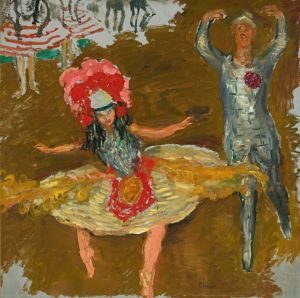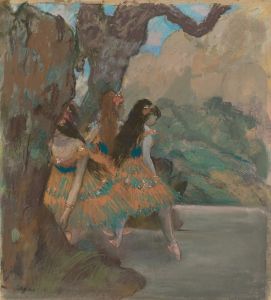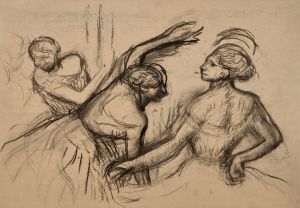
Four Dancers
A hand-painted replica of Edgar Degas’s masterpiece Four Dancers, meticulously crafted by professional artists to capture the true essence of the original. Each piece is created with museum-quality canvas and rare mineral pigments, carefully painted by experienced artists with delicate brushstrokes and rich, layered colors to perfectly recreate the texture of the original artwork. Unlike machine-printed reproductions, this hand-painted version brings the painting to life, infused with the artist’s emotions and skill in every stroke. Whether for personal collection or home decoration, it instantly elevates the artistic atmosphere of any space.
"Four Dancers" is an oil painting by the renowned French artist Edgar Degas, completed around 1899. Degas is widely celebrated for his depictions of dancers, and this particular work exemplifies his fascination with the movement and grace of ballet performers. The painting is housed in the National Gallery of Art in Washington, D.C., and is considered one of Degas's masterpieces.
The composition of "Four Dancers" is notable for its dynamic portrayal of movement and its innovative use of color and light. Degas captures four ballet dancers in a moment of preparation or rest, a common theme in his work, which often focused on the behind-the-scenes aspects of ballet. The dancers are depicted in a diagonal arrangement, creating a sense of depth and movement within the composition. This arrangement also allows the viewer's eye to move fluidly across the canvas, following the lines and forms of the dancers' bodies.
Degas's technique in "Four Dancers" reflects his interest in the effects of light and color. He employs a vibrant palette, with the dancers' costumes rendered in shades of pink, orange, and yellow, contrasting with the cooler tones of the background. The use of pastels, a medium Degas frequently employed, contributes to the softness and fluidity of the forms, enhancing the ethereal quality of the scene. The background is somewhat abstract, with blurred lines and muted colors, which serves to emphasize the figures in the foreground.
The painting also demonstrates Degas's skill in capturing the human form in motion. The dancers are depicted in various poses, each one conveying a sense of grace and poise. Degas's attention to detail is evident in the rendering of the dancers' musculature and the delicate folds of their costumes. This focus on anatomical precision, combined with his ability to convey movement, is a hallmark of Degas's work.
"Four Dancers" is part of a larger body of work by Degas that explores the world of ballet. Throughout his career, Degas produced numerous paintings, drawings, and sculptures of dancers, often depicting them in rehearsal or at rest rather than in performance. This focus on the everyday aspects of a dancer's life offers a unique perspective on the discipline and dedication required in the art of ballet.
Degas's interest in ballet was partly influenced by his own experiences and the cultural milieu of Paris in the late 19th century. Ballet was a popular form of entertainment, and Degas had access to the Paris Opéra, where he observed and sketched dancers. His works provide a glimpse into the world of ballet during this period, capturing both its beauty and its demands.
In summary, "Four Dancers" is a quintessential example of Edgar Degas's work, showcasing his mastery of form, color, and movement. The painting not only highlights the elegance of ballet dancers but also reflects Degas's innovative approach to composition and his deep appreciation for the art of dance.


















